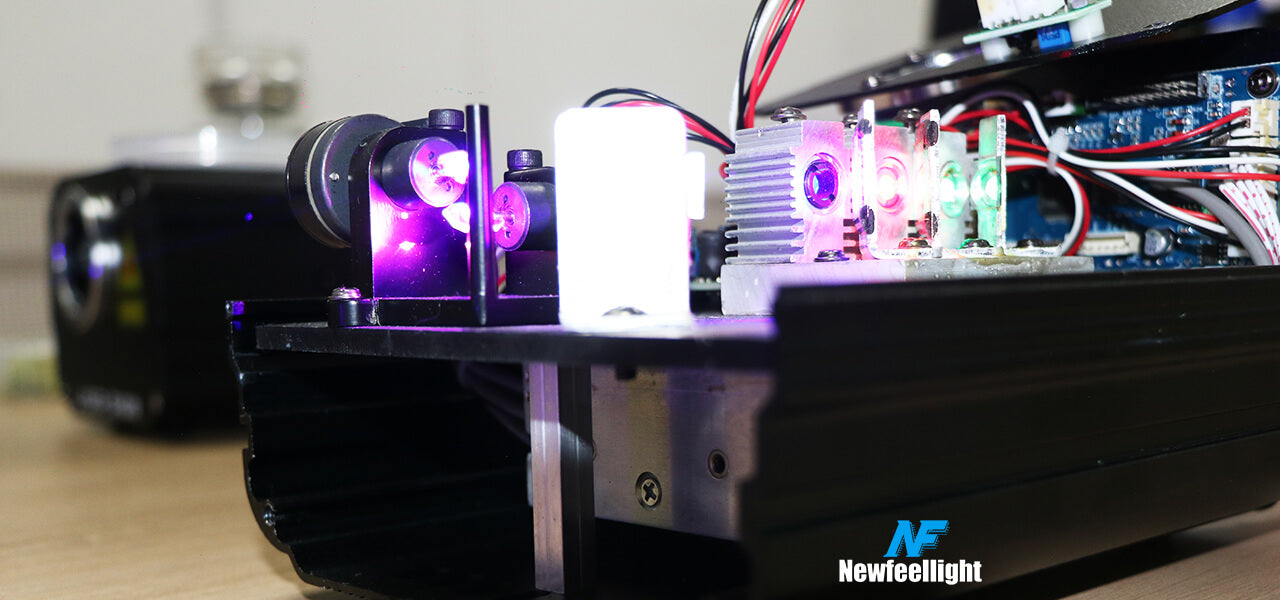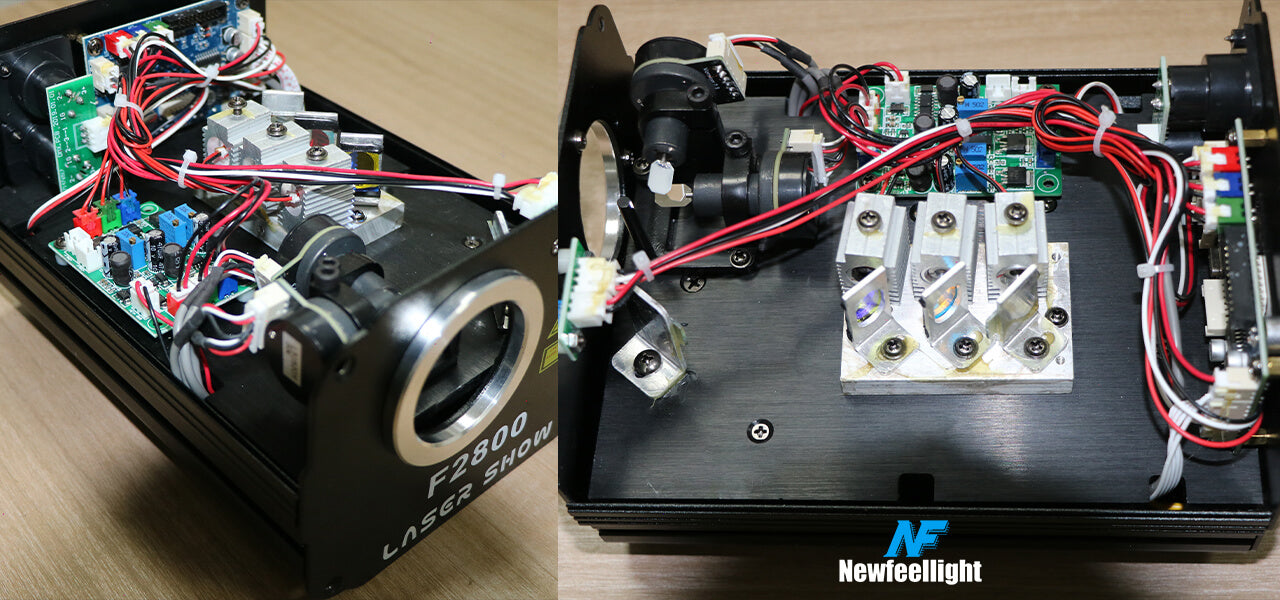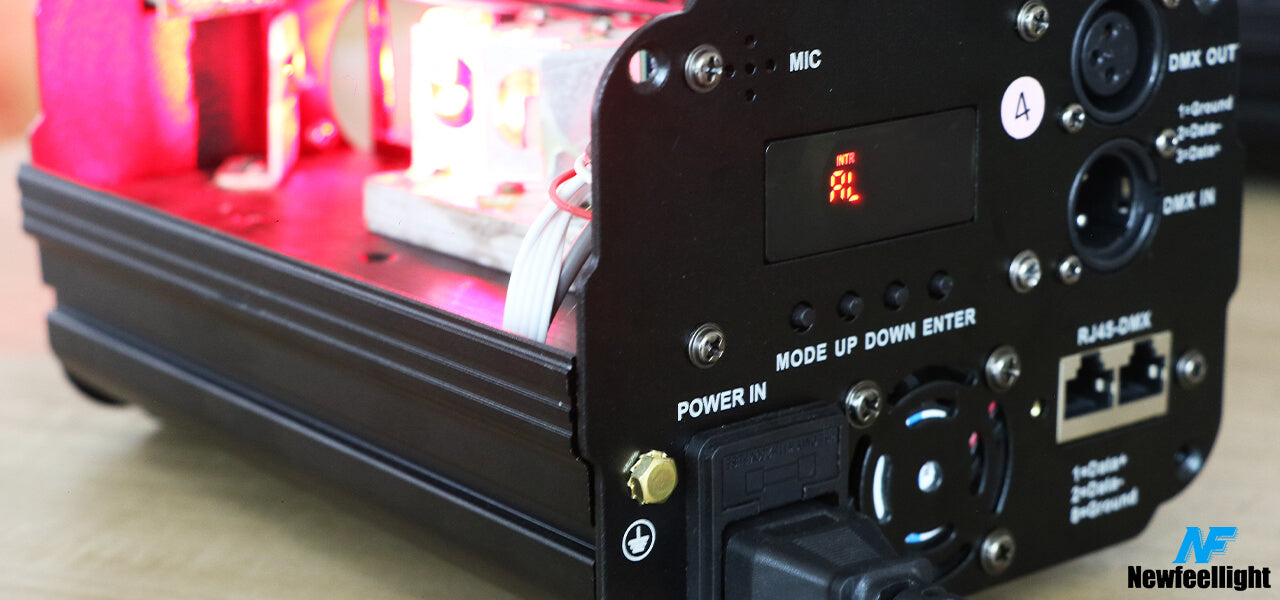What's inside the F2 laser projector for Christmas?
by Newfeel Ho on Aug 07, 2022
In the world of hypermarkets, December 26 is a very special day. The Christmas
music playing on the overhead speakers switched back to the family-friendly
Top 40 Laser Light, the store decorations were thrown into the compactor, and
even everything not related to the holidays was emptied. The most commercial
holiday of all is no longer profitable, so we are returning to normal.
Just in this narrow corridor of time, between big holiday unloads and new
arrivals for spring, you can find some great deals on Christmas decorations.
Not so long ago, this was hardly exciting news for Hackaday readers. But
Christmas Laser lights
and decorations are really starting to push their limits when it comes to
technology: addressable
RGB Laser lights, Bluetooth-controlled effects, and, over the past few years, laser lighting
has exploded.
That's right, you've seen them nearby, you might see some stray beams, and you
might even have your own.
Laser projectors
have been one of the most popular Christmas decorations for the past few
years, and it's not hard to see why. Just place the projector in front of your
door and you're done. No need to climb ladders and string lights on the roof
when you can fire some directional energy there.
Given their popularity, I was surprised to see a lone Holiday Multi-Color
Laser Light Projector
on a clearance shelf at Home Depot for about $230 a few days after Christmas.
That's 20% off the normal MSRP, and right in that sweet impulse-buy price
range. Let's see what's hidden inside!
Crack It Open
This particular projector isn't too different from others I've seen, except
that it actually has three lasers. Usually these projectors just pack red (638
nm) and green (520 nm), but this one also has a blue (450 nm) laser.
Interestingly, the unit has only two laser holes in the front, which means
there must be some kind of beam combiner inside that allows the two lasers to
shoot through a window. Presumably, it would be cheaper and easier to fix the
beam combiner into the design than injection molding a new housing.
The four screws on the back of the unit allow you to pull off the cover, and I
was a little impressed to see a nice rubber seal around the edge to keep water
out. After removing the back cover, you will notice the first interesting
element of this projector's design: the two-layer structure, the upper layer
is the galvanometer, the main board, the light source, the control board, the
driver board; the lower layer is the power supply and heat sink.

Do you want to know why they are designed with two floors up and down? In
fact, it is to reduce the damage of dust to the light source. But it turns out
that this does reduce the damage of dust to the
F2 laser light, which can make the laser light have a better effect and service life. I
know it is not as perfect as the Laser Cube, but at least it is very similar
to the Laser Cube to a certain extent, and the price is lower. The price of
the Laser Cube is about 1000USD, and our price is only 1/5 of the Laser Cube,
and it is a free shipping price.
Close Look
After removing the external laser light case, the structure containing all the
internal hardware is very delicate and compact. All components of the device
are easily accessible, and all components are soldered directly to the back of
the chassis, as if they were originally one.
The largest components are the split light source motorized optics for the
laser light, and the main heatsink at the rear containing the red, blue and
green lasers. 90 degree angle to other lasers. This positioning is necessary
for the beam combiner (small angle glass sheet visible in the center) to send
the red and green beams out of the same aperture. We are using a split light
source with TT modulation to combine 7 colors.

Check The Laser
Obviously, the laser itself is the most interesting part of this device, so
let's get right to the good part: you can see it in the picture. The main
heartsick is at the bottom of the second layer, which works better and gives
you a nice working environment for the heatsink to experiment with.
Careful readers may notice from this photo that the focus of the laser is very
accurate: at 3 meters, the spot of the laser is very small, that is to say, we
can be precise to the smallest divergence angle. Once focused, obviously, our
F2 laser is very similar to the Laser Cube laser, as you can confirm with our
F2 Series
YouTube video.
In fact, once the laser was focused, I could easily burn off the paper and
punch holes in the black plastic. As for the green laser, it's at least twice
as bright as the green laser pointer I marked as 50 mW. I don't have the
equipment to measure the actual power of these lasers, but I certainly
wouldn't be surprised if they were all at least 100 mW.

Thermal (MIS) Management
Impressively, the designers of this laser put a lot of effort into thermal
management. Not only is a temperature sensor embedded in the heatsink to
monitor thermal shutdown, but there is actually a tiny heating pad to bring
the laser to operating temperature in extremely cold conditions.
In the close-up image, you can see that both the thermal sensor (thin red
line) and the heating pad are clearly centered on the laser located to the
left of the heatsink, which happens to be the green laser. Strangely, the blue
laser is housed in a black plastic sleeve that completely isolates it from the
heatsink.

If your biggest takeaway from this article is that NewFeelLight is selling an
F2 laser that is very similar to the Laser Cube, you can use it for more than
enough parties in your home or in your backyard. If that's what you're after.
Yes, I suggest that you can come to our website to see more laser lights.
There is always one suitable for you. Of course, you can also contact us
online to recommend stage lights for you.





